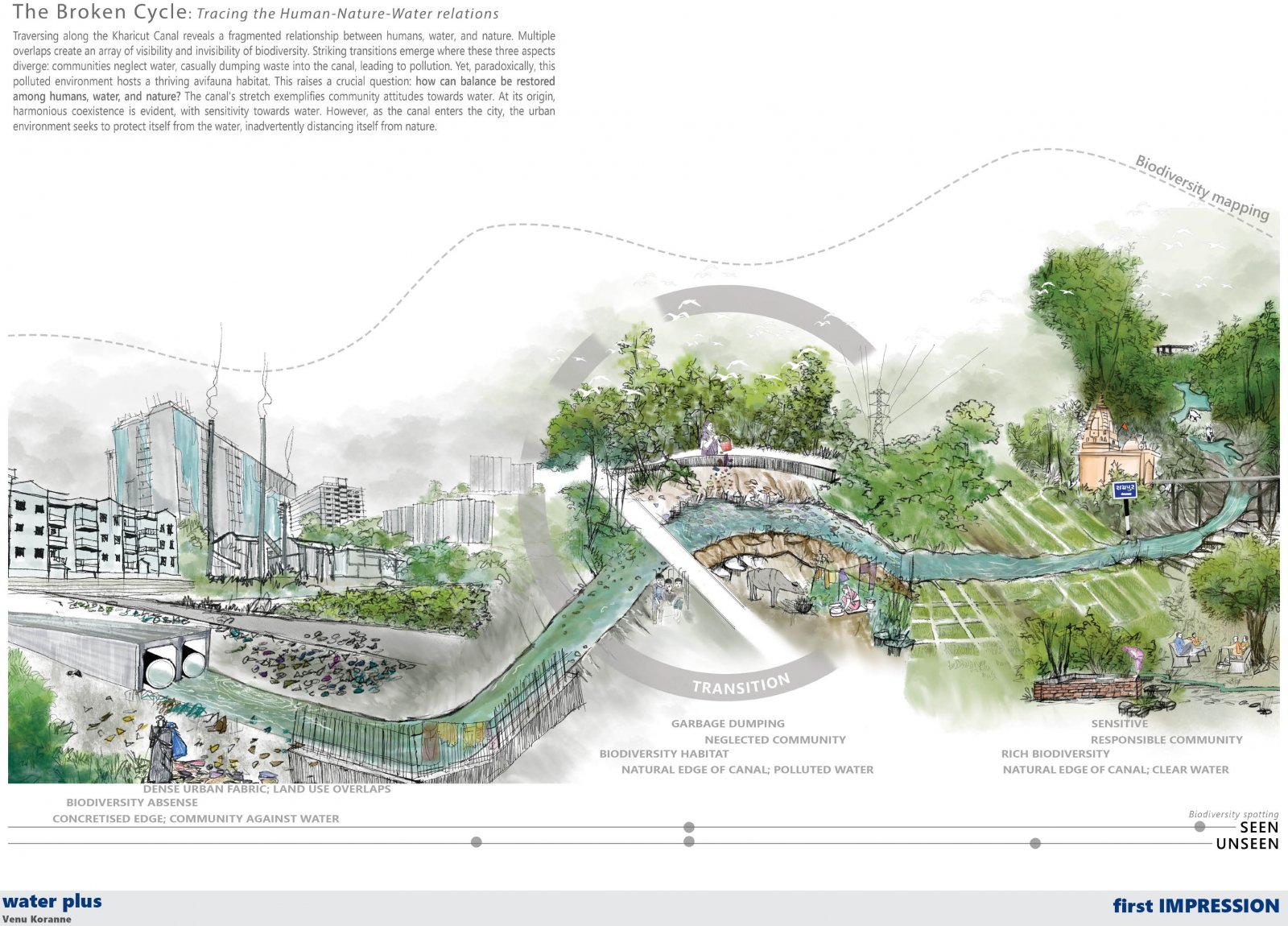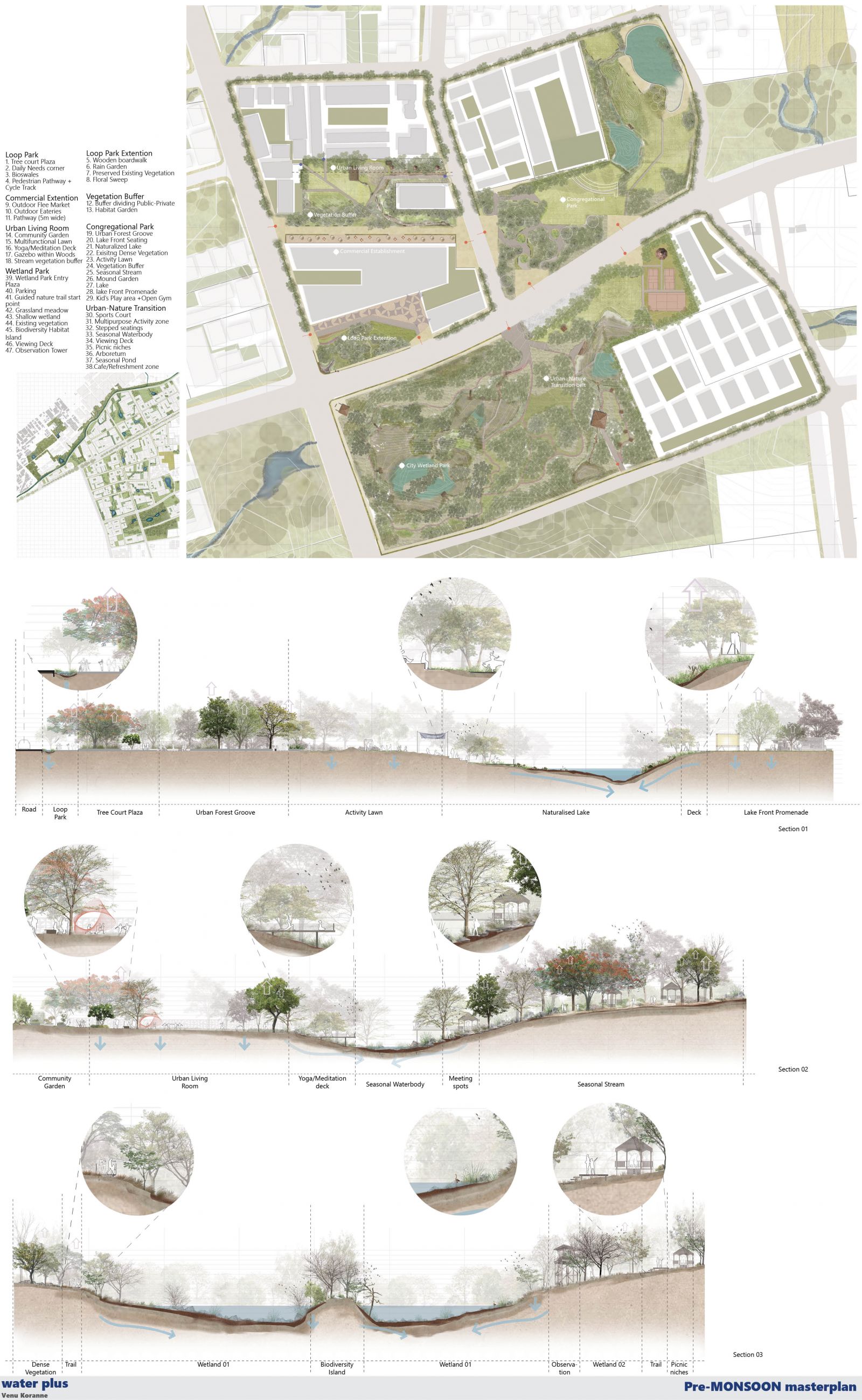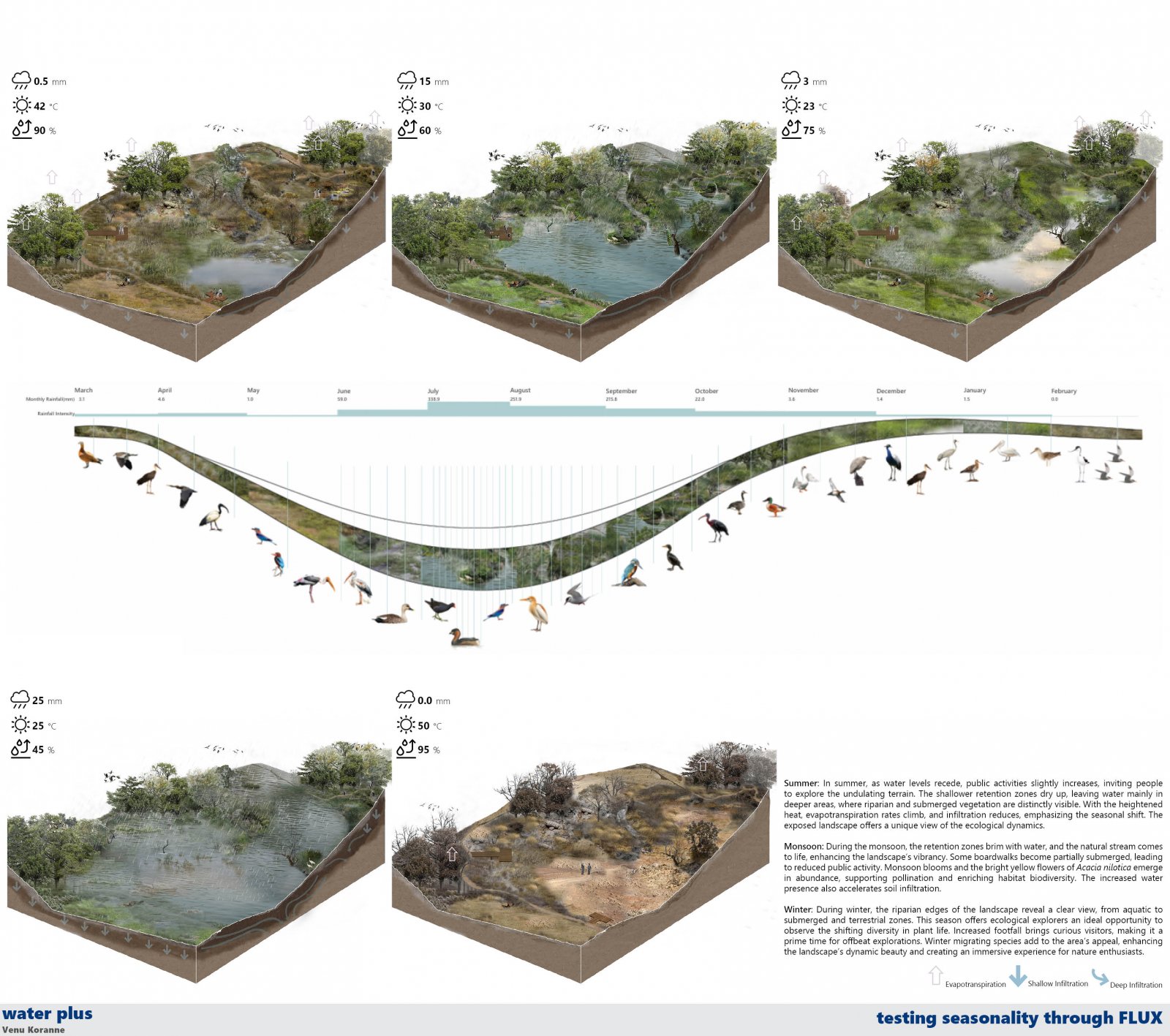Your browser is out-of-date!
For a richer surfing experience on our website, please update your browser. Update my browser now!
For a richer surfing experience on our website, please update your browser. Update my browser now!
Ahmedabad’s radial urban expansion has outpaced expectations, resulting in development that overlooks the city’s natural layers. This neglect is evident in Town Planning (TP) schemes, leading to issues like groundwater depletion, urban heat island effects, and biodiversity loss. The project aims to explore design methodologies that protect natural layers while supporting development. Through curated design guidelines, it proposes clear open space percentages along stream channels and adopts a scale-based approach, addressing open spaces from thin to thick levels. The concept culminates in the “100 Parks” strategy—creating a constellation of green sponges between two major wetlands. This network aims to reconnect natural systems, ensuring ecological preservation while supporting urban development. Unlike isolated interventions like Vastrapur Lake, which suffers from disconnection from natural systems, the 100 Parks framework prioritizes ecological preservation while balancing urban expansion and fosters a responsible community network.
View Additional Work








